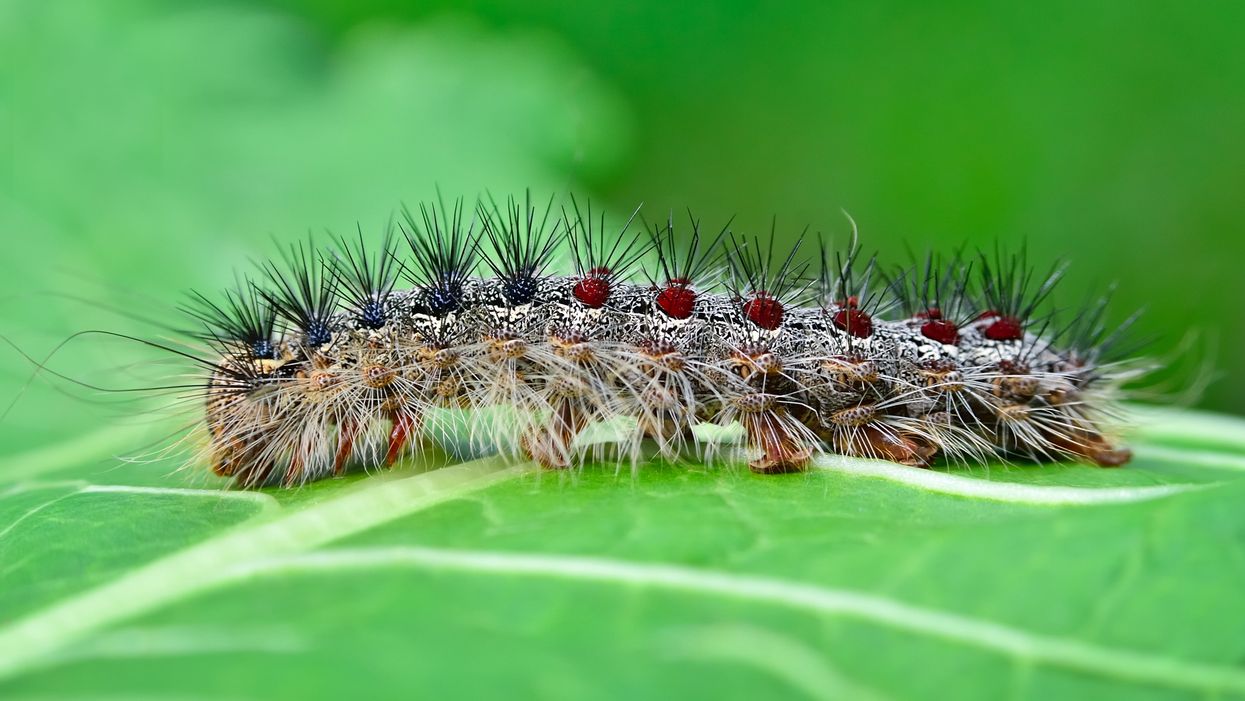
Upstate New York is experiencing an explosion of rain— and it involves caterpillar bathroom breaks.
The species known as gypsy moth caterpillars eat away on up to 500 species of tree leaves, especially oak, maple, crabapple, willow, birch, pine, and spruce, and are making it hail poo onto residential yards, residents in the region say.
The bug, which is invasive, is in a population boom. The critters in the larva stage are in numbers that have not been seen in over 10- 15 years, the Department of Environmental Conservation and media outlets report.
Shannan Warwick, a Schuyler county resident, spoke to Syracuse.com saying she had to move her fire pit and picnic tables to dodge the caterpillar excrement.
“It sounds like it’s raining in the back yard,” Warwick said. “It’s really disgusting.”
Because the gypsy moths are eating away at the leaves, there isn’t as much greenery around.
“There’s no green vegetation at all,” said Dwight Relation, the owner of Rockwood Maples in West Chezy said to Press Republican. “It almost looks like it got hit with a nuke, you know what I mean, like a chemical, and it just killed everything in sight for hundreds of yards through the woods, you know,” he continued.
The New York State Department of Environmental Conservation (DEC) recommended scrapping the gypsy moth caterpillar egg masses of the trees or drowning them in soapy water. However, please proceed with caution because touching the hairs on their backs can cause skin irritation.
Their eggs can also be a bit bothersome.
“It’ll lay egg masses on the side of your house, on your outdoor equipment, on your patio furniture,” DEC Forester Rob Cole said on Facebook Live video.
He also notes that the moth “will lay its egg masses on anything outdoors,” not just trees.
A video shared by Jane Lindholm showed what type of devastation the caterpillars have already caused in Vermont.
Female moths are white with some brown markings and do not fly. Men are brownish in color.
The egg masses themselves are light brown and have a fuzzy look to them when they appear on tree trunks, branches, firewood, or sheltered areas. Every egg mass has up to 600-700 eggs.
Additionally, the caterpillars are most likely to become moths in July per the DEC. The outbreaks of the moths can also last about two to three years.
A French entrepreneur discovered gypsy moths in 1869 as he traveled from France to Massachusetts to create a silkworm industry.
The caterpillars weren’t the best at making the silk. According to Entomology at the University of Kentucky, some larvae were blown outside from a window in Medford, Massachusetts, and ended up establishing a beachhead on the continent.
They have expanded, jumped on the back of cars, and are now within Minnesota and North Carolina.
For more information on how to deal with the outbreak, check out the website here.












